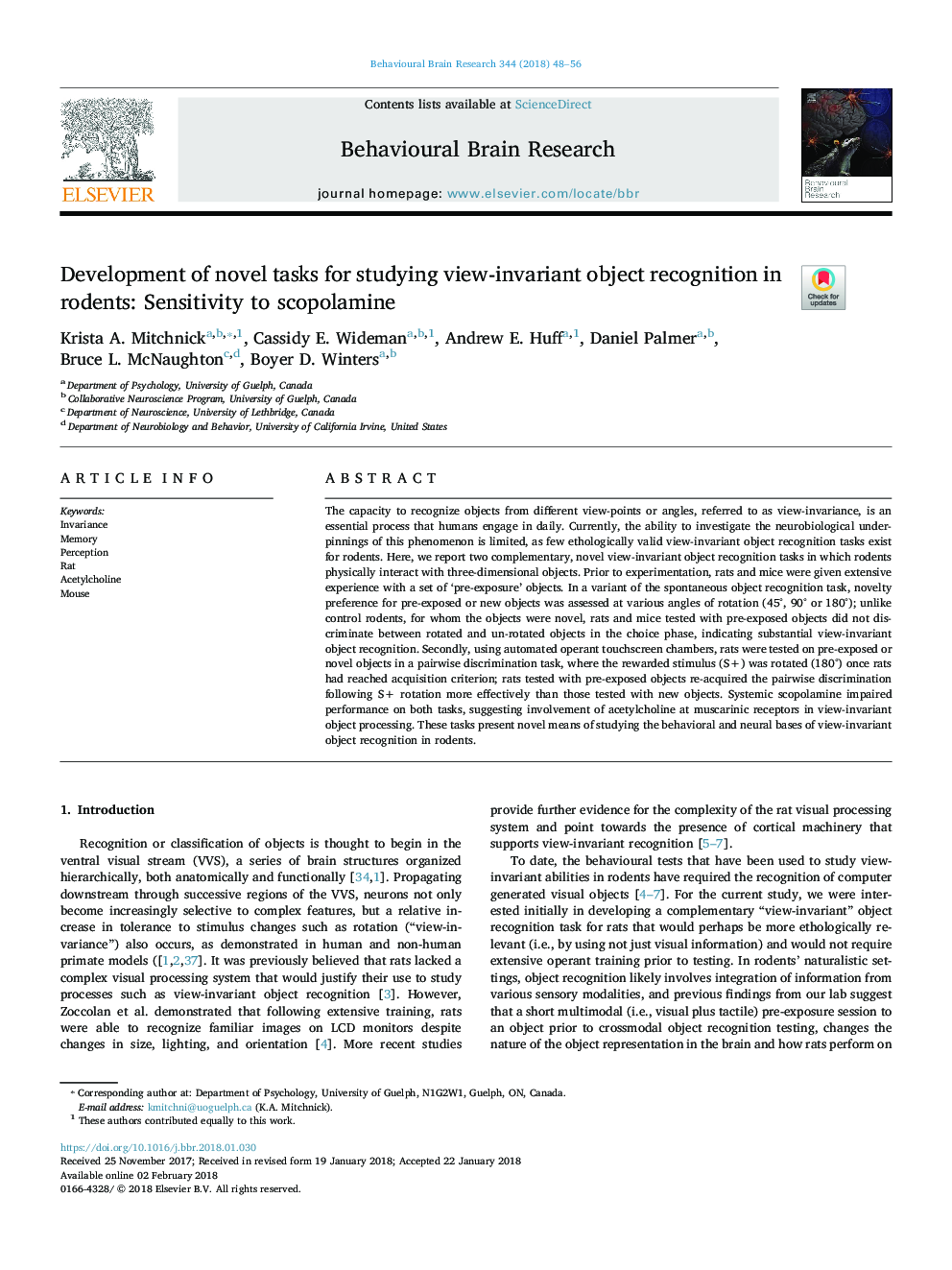| Article ID | Journal | Published Year | Pages | File Type |
|---|---|---|---|---|
| 8837848 | Behavioural Brain Research | 2018 | 9 Pages |
Abstract
The capacity to recognize objects from different view-points or angles, referred to as view-invariance, is an essential process that humans engage in daily. Currently, the ability to investigate the neurobiological underpinnings of this phenomenon is limited, as few ethologically valid view-invariant object recognition tasks exist for rodents. Here, we report two complementary, novel view-invariant object recognition tasks in which rodents physically interact with three-dimensional objects. Prior to experimentation, rats and mice were given extensive experience with a set of 'pre-exposure' objects. In a variant of the spontaneous object recognition task, novelty preference for pre-exposed or new objects was assessed at various angles of rotation (45°, 90° or 180°); unlike control rodents, for whom the objects were novel, rats and mice tested with pre-exposed objects did not discriminate between rotated and un-rotated objects in the choice phase, indicating substantial view-invariant object recognition. Secondly, using automated operant touchscreen chambers, rats were tested on pre-exposed or novel objects in a pairwise discrimination task, where the rewarded stimulus (S+) was rotated (180°) once rats had reached acquisition criterion; rats tested with pre-exposed objects re-acquired the pairwise discrimination following S+ rotation more effectively than those tested with new objects. Systemic scopolamine impaired performance on both tasks, suggesting involvement of acetylcholine at muscarinic receptors in view-invariant object processing. These tasks present novel means of studying the behavioral and neural bases of view-invariant object recognition in rodents.
Related Topics
Life Sciences
Neuroscience
Behavioral Neuroscience
Authors
Krista A. Mitchnick, Cassidy E. Wideman, Andrew E. Huff, Daniel Palmer, Bruce L. McNaughton, Boyer D. Winters,
